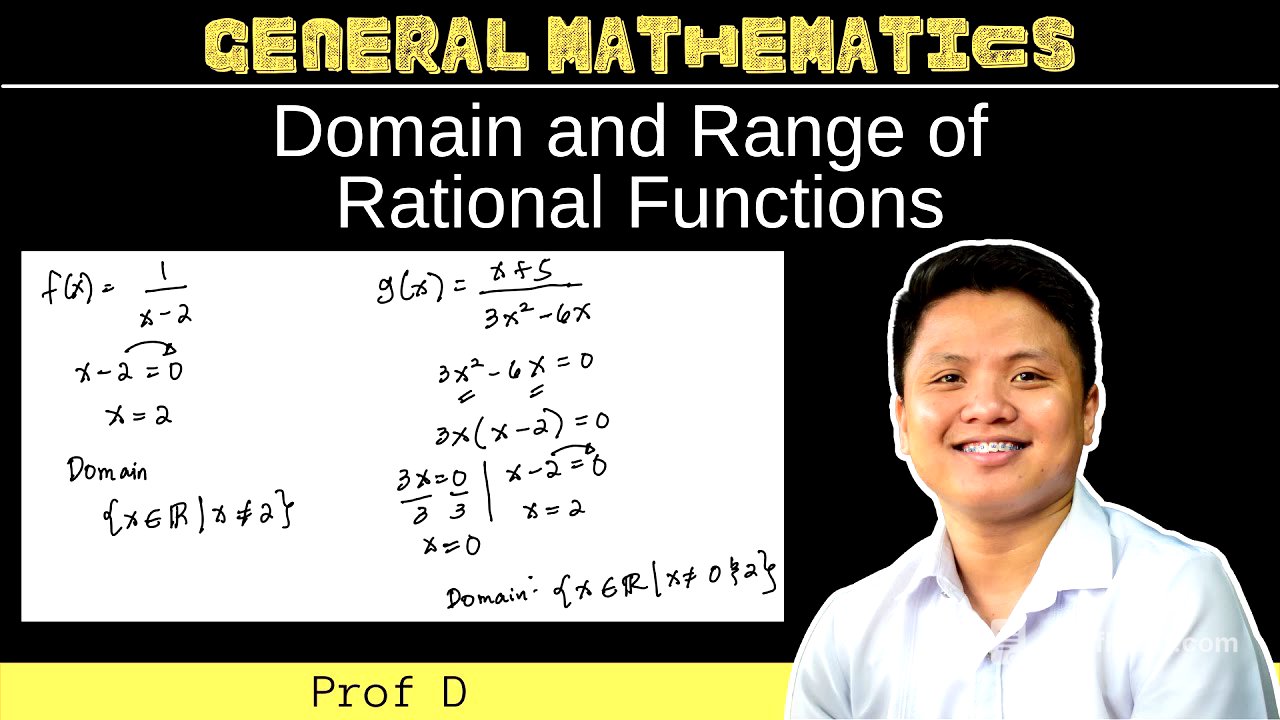TLDR;
This video explains how to find the domain and range of rational functions. It covers finding the domain by identifying values that make the denominator zero and excluding them. The range is determined by replacing f(x) with y, solving for x in terms of y, and identifying values that make the new denominator zero. The video also demonstrates how to identify the domain and range from a graph.
- Domain: Find values of x that don't make the denominator zero.
- Range: Solve for x in terms of y and find values of y that don't make the denominator zero.
- Graphs: Identify domain and range by looking at vertical and horizontal asymptotes.
Introduction to Domain and Range of Rational Functions [0:00]
The video introduces the concept of finding the domain and range of rational functions. A rational function is only defined when its denominator is not equal to zero. The domain consists of all real numbers except those that make the denominator zero.
Finding the Domain of Rational Functions: Example 1 [0:09]
To find the domain of the function f(x) = 1 / (x - 2), set the denominator x - 2 equal to zero and solve for x. This gives x = 2. Therefore, the domain is the set of all real numbers such that x is not equal to 2.
Finding the Domain of Rational Functions: Example 2 [1:19]
To find the domain of the function g(x) = (x + 5) / (3x^2 - 6x), set the denominator 3x^2 - 6x equal to zero. Factor out 3x to get 3x(x - 2) = 0. Equate both factors to zero, resulting in 3x = 0 and x - 2 = 0. Solving these equations gives x = 0 and x = 2. Thus, the domain is the set of all real numbers such that x is not equal to 0 or 2.
Finding the Range of Rational Functions: Example 1 [2:47]
To find the range of the rational function f(x) = 1 / (x - 2), replace f(x) with y, so y = 1 / (x - 2). Solve for x in terms of y by cross-multiplying and isolating x. This gives x = (1 / y) + 2. The range is determined by identifying values of y that make the denominator zero. In this case, y cannot be zero. Therefore, the range is the set of all real numbers such that y is not equal to 0.
Determining Domain and Range from a Graph: Example 2 [4:59]
To determine the domain and range from a graph, observe the asymptotes. The domain is all x-values except where there is a vertical asymptote. The range is all y-values except where there is a horizontal asymptote. In the example provided, the domain is the set of all real numbers such that x is not equal to -3, and the range is the set of all real numbers such that y is not equal to 1.









